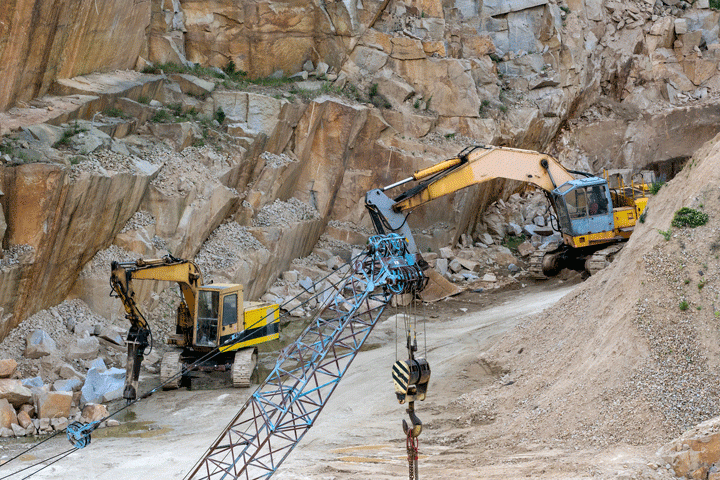Diving into of Granite Quarries in South Africa
Diving into of Granite Quarries in South Africa
Blog Article
Unearthing the Rich Background and Sustainable Practices of Granite Quarrying
As we depend on the precipice of discovering the intricate tapestry of granite quarrying, a journey via time exposes not simply the physical act of drawing out rock but likewise the social and historical value woven into the really fabric of this method. From the ancient beginnings that laid the foundation for modern-day quarrying techniques to the lasting practices that are forming the future of this sector, each chisel mark on granite surface areas tells a story waiting to be unearthed (granite quarries in south africa). The tradition of granite quarrying stretches much past simple extraction; it is a testimony to human resourcefulness, strength, and the long-lasting appeal of this majestic rock
Ancient Origins of Granite Quarrying
Dating back to old people, the method of quarrying granite has been an important part of human history and architectural improvement. The earliest proof of granite quarrying dates back to old Egypt, where substantial pyramids and detailed sculptures were crafted from this sturdy stone. The Egyptians utilized primitive devices to remove granite blocks from quarries, showcasing the relevance of this material in their monumental constructions.
Moving on in history, the Greeks also made significant contributions to the quarrying of granite. The Greeks used granite in different architectural marvels, such as holy places and statuaries, showing their ability in shaping and sculpting this sturdy stone. The Romans additionally fine-tuned the methods of quarrying granite, utilizing sophisticated tools like blades and hammers to extract and shape granite for their iconic frameworks.
Via the centuries, the technique of quarrying granite has actually progressed, with contemporary technologies enhancing performance while keeping the classic allure of this all-natural rock - granite quarries in south africa. From ancient people to contemporary building contractors, the heritage of granite quarrying remains to shape our world
Advancement of Quarrying Methods
The evolution of quarrying methods has been noted by a constant progression towards better performance and accuracy in removing granite. Early quarrying techniques involved hand-operated labor with standard tools such as chisels, hammers, and wedges to remove granite blocks from the earth.
In more recent times, the advent of machinery revolutionized the quarrying market, making it possible for faster removal rates and boosted productivity. Technologies such as ruby cable saws, high-pressure water jets, and pneumatic drills have come to be common in modern quarries, enabling for precise cutting and decreased waste. In addition, developments in computer-controlled tools and 3D modeling have maximized quarrying operations, bring about very little ecological impact and improved sustainability methods. As the demand for granite continues to rise, the advancement of quarrying methods remains important to conference market needs successfully and sustainably.
Cultural Value of Granite
Granite holds a profound social value across different people because of its enduring presence in building work of arts and revered monuments. From the stunning pyramids of Egypt to the elaborate carvings of the Angkor Wat holy place in Cambodia, granite has been a material of selection for sharing magnificence and durability in cultural heritage. In old Rome, granite columns decorated temples and public structures, representing stamina and durability. The social importance of granite extends past its physical qualities; it embodies strength, stability, and timelessness, making it an icon of withstanding legacies and practices.

Sustainable Practices in Quarrying
Among the rich history of granite quarrying and its social importance exists a growing emphasis on lasting methods within the market. As environmental recognition and worries regarding source exhaustion have increased worldwide, the quarrying industry has increasingly embraced lasting methods to reduce its effect on the atmosphere and surrounding neighborhoods.

In addition, recovery and recovery of quarry sites post-extraction are essential to lasting techniques. By restoring quarried locations to an all-natural or advantageous state, such as creating wildlife habitats or leisure spaces, quarriers can offset the environmental impact of their operations and add favorably to the neighborhood ecosystem.
Tradition of Granite Quarrying
With a historical backdrop steeped in workmanship and industrial progress, what sustaining effect has granite quarrying left on the landscape of contemporary society? The tradition of granite quarrying transcends simple removal practices; it has actually formed architectural wonders, metropolitan landscapes, and social heritage worldwide. The sturdy nature of granite has actually made it a preferred choice for monoliths, buildings, and facilities, standing as a testimony to the ability and creativity of quarry employees across generations.
Moreover, the economic footprint of granite quarrying can not be ignored. The sector remains to supply employment chances and drive regional economic climates in areas where granite removal is common. It has actually additionally stimulated technological improvements in quarrying strategies and devices, resulting in a lot more reliable and sustainable practices.
In terms of sustainability, the tradition of granite quarrying consists of efforts to minimize ecological influences through recovery jobs and liable resource management. By balancing economic rate of interests with environmental stewardship, the industry strives to guarantee that future generations can remain to gain from this long-lasting natural source.
Final Thought

Report this page